In general, increasing or decreasing the throttle means changing the throttle opening of the engine through the accelerator pedal, thereby controlling the flow of the combustible mixture, changing the speed and power of the engine to meet the needs of the vehicle. The conventional engine throttle operating mechanism is operated by a cable or a pull rod, one end is coupled to the accelerator pedal, and the other end is coupled to the throttle linkage plate. However, this traditional throttle application is limited and lacks accuracy.
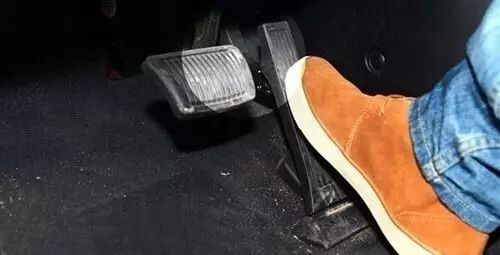
With the development of automotive electronics technology, an electronic throttle (EGAS) came into being. In the current electronic fuel injection engine, in addition to the above functions, the electronic throttle can further improve the fuel economy and emission performance of the engine, because it controls the gate of the engine power regulation. The main function of the electronic throttle is to convert the angle at which the driver steps on the accelerator pedal into a voltage signal proportional to it, and at the same time make various special positions of the accelerator pedal into contact switches, and the engine conditions such as idle speed, high load, acceleration and deceleration The electrical pulse signal is sent to the controller ECU of the electronically controlled engine to achieve optimal automatic control of fuel supply, fuel injection and shifting.
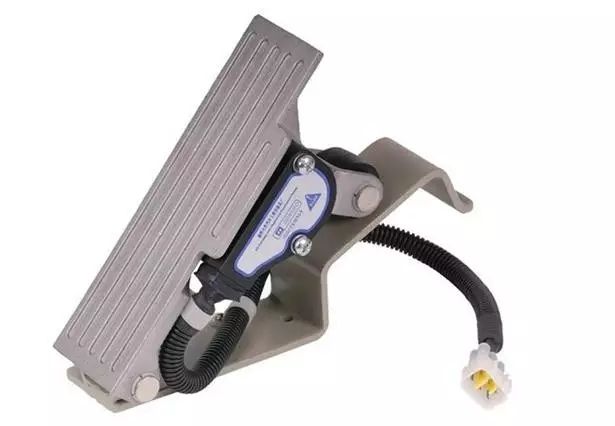
The electronic throttle control system is mainly composed of an accelerator pedal, a pedal displacement sensor, an ECU (Electronic Control Unit), a data bus, a servo motor and a throttle actuator. The displacement sensor is mounted inside the accelerator pedal to monitor the position of the accelerator pedal at any time. When it is detected that there is a change in the height position of the accelerator pedal, the information will be sent to the ECU in an instant, and the ECU performs arithmetic processing on the information and the data information transmitted from other systems, calculates a control signal, and sends it to the servo motor relay through the line, and the servo The motor drives the throttle actuator and the data bus is responsible for communication between the system ECU and other ECUs.
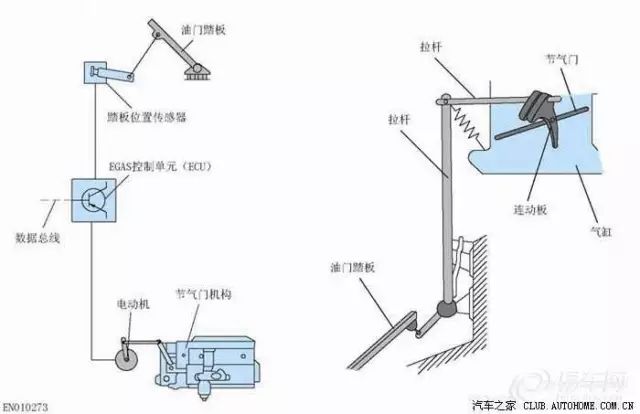
Compared with the traditional cable throttle, the electronic throttle is not just a cable instead of a cable. In the traditional mechanical pull throttle, the opening of the throttle is directly controlled by the driver, and due to the driver's experience and limited ability to judge the condition of the car, it is often difficult to achieve the optimal opening of the throttle, and the car cannot be placed in a Economical and comfortable and comfortable; in a car equipped with an electronic throttle control system, the throttle opening is not only related to the driver's stepping on the pedal opening, but the ECU is sensing the pedal position sensor signal. After comprehensive analysis and comparison with other various sensors, the optimal position of the throttle valve under the current working conditions is obtained, so as to achieve a theoretical air-fuel ratio state close to 14.7:1 under different loads and working conditions, so that the fuel economy Sexual and driving comfort is at its best.

When we are driving everyday, we will encounter some newcomers or unskilled people. Due to improper operation, or some overly aggressive drivers, the accelerator pedal will be suddenly stepped on. We know that this operation is unscientific and not only not conducive to Fuel economy and damage to the engine. The throttle suddenly opens, this time is the maximum load state of the engine, the full load will cause the engine to burn insufficiently, and the injector will also increase the fuel injection, resulting in waste of fuel, increased engine load, and shortened engine use. Life expectancy is not conducive to environmental protection. For the vehicle that pulls the throttle, the ECU cannot control the throttle valve. It can only default to this misoperation, and it will adjust the fuel injection at most, but it still cannot solve the fundamental problem. For the electronic throttle, this is a breeze. At this time, the ECU will consider this to be an unscientific driving practice for the driver, and will issue a command to open the throttle at a certain speed, rather than synchronizing with the speed at which the driver steps on the pedal. In addition to protecting the engine and improving fuel economy, he also makes the driver feel very smooth and shock-free, improving the comfort of the occupants.
How electronic throttle worksWhen the sensor detects that there is a change in the height position of the accelerator pedal, the information is sent to the ECU in an instant, and the ECU performs arithmetic processing on the information and the data information transmitted from other systems, and calculates a control signal, which is sent to the servo motor relay through the line. The servo motor drives the throttle actuator, and the data bus is responsible for communication between the system ECU and other ECUs. Since the electronic throttle system adjusts the throttle through the ECU, the electronic throttle system can be equipped with various functions to improve the safety and comfort of driving. The most common ones are ASR (traction control system) and speed control system (cruise control). ).
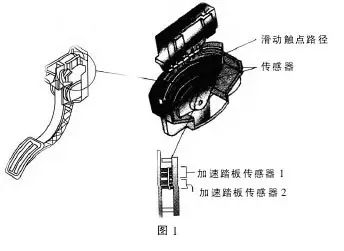
When the ASR system senses the rotational speed of the wheel, the ECU determines the slip rate based on the difference between the position of the accelerator pedal, the wheel speed, and the steering angle of the steering wheel, and adjusts the flow rate of the mixture by reducing the throttle opening to lower the engine. Power to achieve control purposes. In the ASR system, the electronic throttle plays a very important role. It involves the functions of vehicle speed control and idle speed control in the entire ASR system, enabling the system to execute commands quickly and accurately. That is, when the electronic throttle system receives the ASR system command, it only comes from the ASR for the throttle control command, so that the driver's misoperation can be avoided.
When the driver uses the speed control system, the vehicle speed sensor inputs the vehicle speed signal into the ECU, and the ECU outputs a command servo motor to control the throttle opening. In such a system, the engine throttle opening is automatically adjusted by the control system in accordance with the change in the running resistance to keep the traveling speed stable. Therefore, the electronic throttle system is also compatible with cruise control functions. In current electronic fuel injection engines, the electronic throttle not only further improves the fuel economy and emissions performance of the engine, because it controls the door of engine power regulation. Therefore, the electronic throttle can play a lot of roles. In addition to the above functions, it can further improve the fuel economy and emissions performance of the engine, because it controls the door of engine power regulation. Therefore, the electronic throttle can play a lot of roles.
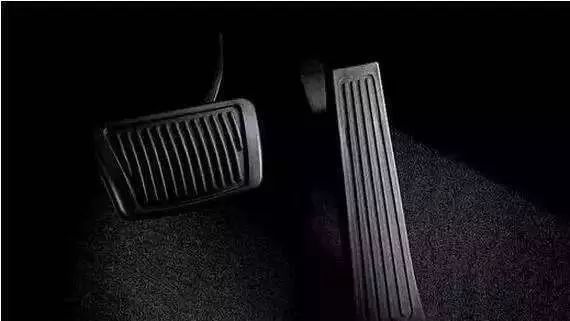
As an indispensable part of the car, the throttle directly affects the safety of the car. Since the 21st century, most cars have replaced the conventional throttle with an electronic throttle. Compared with the old-fashioned pull-throttle, the electronic throttle controls the electronic signal by the depth of the accelerator pedal, so that the engine provides the matching power. The biggest feature is that the throttle opening can be controlled by the ECU. When the position of the accelerator pedal changes, the signal output from the electronic throttle can be used as a basis for measuring the accuracy of the electronic throttle automatic control. The electronic throttle detection system uses various schemes to evaluate the quality and reliability of the electronic throttle based on these real-time signals. Its performance testing.
Characteristics of ECU control throttle in electronic throttle modelsIn the electronic throttle model, when the ECU controls the throttle, the throttle depth is combined with the vehicle condition for analysis, and the current appropriate throttle opening is calculated. When the driver suddenly accelerates when starting (the pedal is stepped on to the bottom), the ECU analyzes according to the current speed and throttle size. From the perspective of fuel economy and reasonable emissions, the opening range of the throttle valve is appropriately restricted, and the spray is controlled. The oil system limits the injector to maximize fuel injection. This makes the driver feel that there is obviously a delay after the throttle is depressed, and the driver starts to exert force. This is called throttle lag. Therefore, the throttle hysteresis is actually formed by the ECU limiting the instantaneous power output of the engine. Of course, this also brings benefits - saving fuel and protecting the environment.
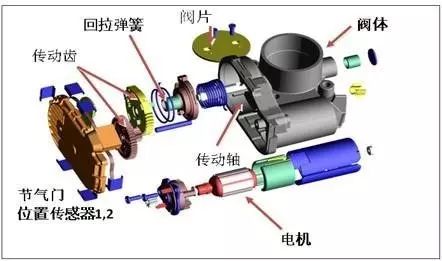
However, the electronic throttle is not used to limit the engine's power output. When the car is running, if you quickly step on/release the throttle pedal 1/3 depth, you can feel the obvious fueling/recharging of the car. Almost equivalent to completely depressing/releasing the throttle. What is going on? This is the case where the ECU assists the driver in speeding up/decelerating according to the current condition. Therefore, when the electronic throttle model is running, the ECU will help the driver to achieve the desired acceleration/deceleration operation according to the vehicle condition, making it easier for the driver to operate the accelerator pedal.
Important relevant parameters of electronic throttle1. Synchronization degree: The throttle outputs the equality of two signal values ​​at a certain stroke angle.
2. Linearity: The difference between the theoretical voltage value of the throttle signal at a certain stroke angle and the actual voltage value.
3. Free-stroke angle: refers to the pedal stroke angle when the pedal starts to change angle.
4. Pedal force: including pressure and elasticity, is the force curve of the pedal from idle speed to full stroke, and then from full stroke to idle speed.
5. Throttle signal curve: including the idle signal and full stroke signal, the voltage output signal curve of the accelerator pedal from idle speed to full stroke.
6. Hysteresis: At a given angle, the output pressure in two different directions of rotation is measured. The hysteresis effect is the difference between the two output pressures. The maximum acceptable gap is 1% for Ua taxis.
7. Repeatability: Under the same conditions, after 10 complete round trips, the recorded voltage difference cannot exceed O for a given temperature of (23 ± 5) °C and any point in the same direction. .5%.
Electronic throttle advantages and disadvantagesadvantage
1. The electronic throttle control system can achieve a better throttle opening. The structure of the traditional mechanical pull throttle is shown in the figure. The nonlinear relationship between the throttle intake flow and the throttle angle is shown in the figure. Therefore, under many working conditions, it is difficult for the driver to directly control the throttle opening. Making precise adjustments, especially in cold start, low load and idle conditions, can result in reduced economy and drivability and ride comfort, as well as increased emissions of hazardous materials.
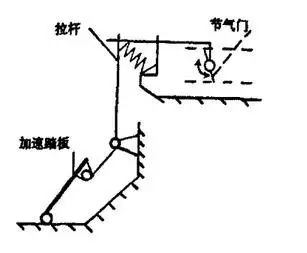
Mechanical throttle structure
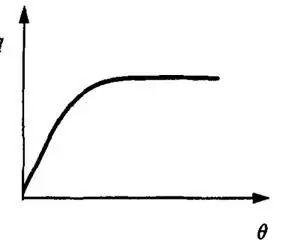
Throttle angle and gas flow curve
The electronic throttle system judges the driver's intention according to the action range of the driver's stepping on the pedal, and the integrated vehicle condition accurately and rationally controls the throttle opening degree, achieving the effects of good comfort and economy.
2. High stability, not easy to extinguish and sway. In daily driving, the driver may experience misoperation due to insufficient driving experience or sudden situation, and the traditional throttle system directly performs the driver's misoperation resulting in a flameout or an accident.
The electronic throttle system will analyze and judge the pedal signal, and then send appropriate instructions to the throttle actuator to ensure the vehicle runs stably.
Shortcomings
1. The working principle is relatively complicated and the cost is increased. Compared with the traditional pull throttle, in the hardware, the electronic throttle needs to add the throttle position displacement sensor and the servo motor as well as its driver and actuator, and increase the ECU wiring; in software, it is necessary to develop and analyze the position sensor signal and optimize the vehicle condition to give the best. Controls the algorithm of the instructions and integrates them on the vehicle ECU to increase development costs.
2, there is a delay effect, no pull throttle throttle response. As mentioned above, in a car equipped with an electronic throttle system, the driver cannot directly control the throttle opening and cannot directly control the engine power. Instead, the ECU analyzes the section that gives the car comfort and better fuel economy. The valve control command has a slight delay compared to the directly controlled pull throttle.
3. Reliability is not as good as mechanical throttle.
Various driving conditions are encountered in the car, and there are high-frequency electromagnetic interferences inside the car, such as the motor and the ignition coil, which may cause electromagnetic interference. The electronic device may malfunction or loose under these conditions; complex analysis and processing algorithms may also The fault condition such as the running of the program occurs, and the driver cannot directly control the power of the engine. Once this happens, unpredictable consequences will occur.
Electronic throttle accelerator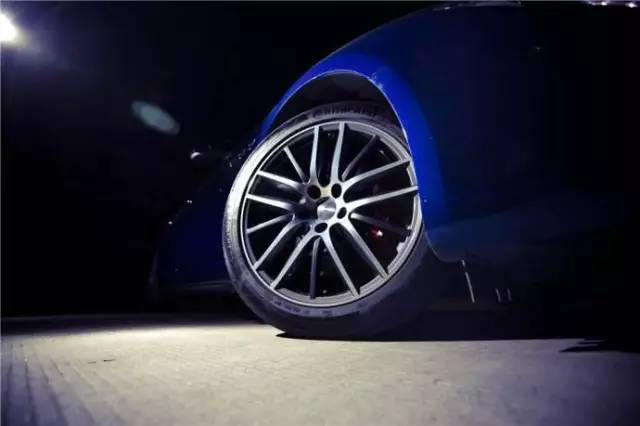
Simply put, the electronic throttle accelerator was born to alleviate the throttle lag. According to the characteristics of the electronic throttle, the electronic throttle accelerator will have the following characteristics:
1. Amplify the throttle signal to improve the static response
The so-called "acceleration" of the electronic throttle accelerator is mainly achieved by increasing the sensitivity of the throttle response. Some models will amplify the input throttle signal by 50%. This means that at any time the 33% throttle signal at the end of the pedal is no longer useful. When the driver steps on the pedal 66%, the accelerator output is already full throttle, which increases the sensitivity of the throttle response by 50. %. However, the electronic throttle accelerator does not reduce the classification of the throttle signal as many people have said. In fact, the throttle signal is still steplessly adjusted, but the previous 1:1 is adjusted to 1:1.X, and X is the signal. Magnification factor.
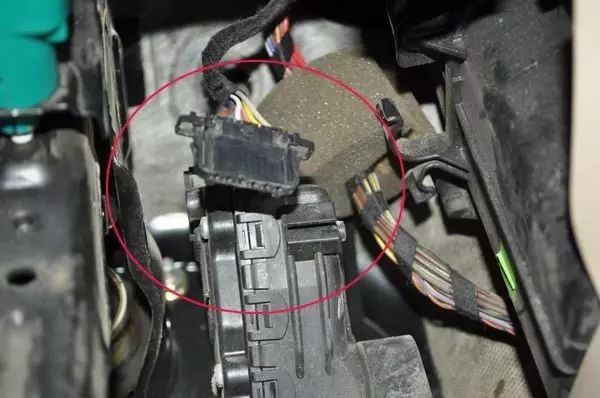
2. Amplify the throttle signal to increase the speed and improve the dynamic response.
When the accelerator pedal is depressed, the accelerator will calculate the rate of change of the throttle signal according to the magnitude and time of the depression. The faster the change, the stronger the acceleration requirement is, and the throttle accelerator will increase the rate of change. The final effect is the speed increase. Correspondingly better.
3. Provide false driving style for ECU to adjust engine parameters
Modern engine ECUs generally have the ability to adapt to driving style. If the driver often quickly steps on the throttle (commonly known as pulling speed), the ECU will gradually think that the driver's style tends to be “violentâ€, so the engine will slowly adjust the throttle and fuel injection. The system waits to get the best adjustment parameters for the engine in this style. With the electronic throttle accelerator, even if you drive according to the previous "moderate" driving style, the engine will still get a "fierce" driving experience, which is equivalent to deceiving the ECU. Over time, the engine will automatically modify its parameters to suit the style. .
4, the manual model oil separation difficulty increases
After the manual transmission model is added to the throttle accelerator, the accelerator pedal response is too sensitive, and the start requires a more precise oil-disengagement to achieve the previous effect. This is very similar to the effect of the depth of the clutch on whether the smooth start is smooth. The deep clutch is easy to control, but the operation stroke is large; the shallow clutch operation stroke is short, but the control is difficult, and the influence of the accelerator pedal on the starting is also the same.
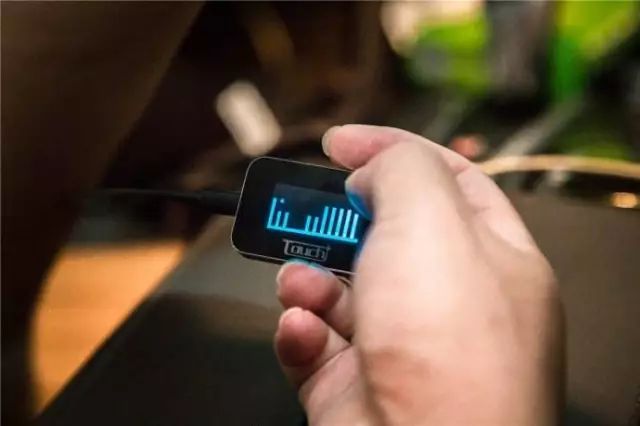
5, increase fuel consumption
Because the throttle accelerator improves the throttle response, it is equivalent to the style of driving style more intense, which will undoubtedly increase fuel consumption, but the fuel consumption increase is not very high, our measured fuel consumption increased between 5% and 10%. This is acceptable for those who love driving.
6, too "stupid"
Once the throttle accelerators currently on the market are installed, they will faithfully perform the “acceleration†duties regardless of the current road conditions and driver's wishes, which will cause trouble to the driver in many cases. First of all, for automatic transmission models, the rapid increase of the throttle signal often causes automatic downshifting. When the vehicle is driving at a high speed, frequent downshifting will result in excessive engine speed, which increases fuel consumption on the one hand and increases unnecessary wear on the other hand. In addition, many times drivers are not necessarily willing to operate the car fiercely. For example, when driving in the evening leads to poor line of sight, and the rain and snow cause the road to slippery, excessive acceleration increases the risk of driving. However, the current accelerator cannot be closed at will (unless you remove it), which causes great inconvenience to the user.
Buckle type insulation sleeve is mainly used for insulation protection pipe of bare wire.Buckle insulation sleeve has reliable performance and convenient installation.
Since it was put into the market, it has been widely used in the insulation protection of electric railway and power grid bare line.
The buckle type insulation bushing has the characteristics of safe and reliable electrical performance, convenient installation, no need for free end, no fire and so on.
In the insulation protection of electric bare line crossing trees, obstacles and strengthening insulation protection, etc.,
Gradually replace insulation bushing, composite insulation tape, waterproof tape, high and low voltage insulation tape.
Overhead Line Insulation Sleeve is used for railway contact network overhead line system, improve insulation performance to ensure the safe operation of railway line.
Protective Wire Sleeve can provide shielding for cable joints on solid dielectric insulated power cables. Replace Semi-conduction layer beneath metallic shield of similar cables in case of damage.
Polyolefin Clasps,Wire Fire Sleeve,Sleeving For Wiring,Electrical Wire Sleeving
CAS Applied Chemistry Materials Co.,Ltd. , https://www.casac1997.com
